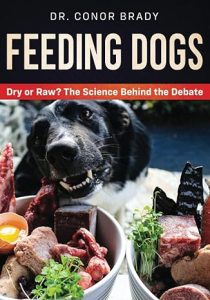R
aw pet food for dogs has become a hot topic of debate among pet owners. Some swear by the benefits it brings, claiming it improves their dog’s overall health and longevity. Others, however, believe it poses serious risks to both the dog and the household. But what does science really say about raw meat? In this article, we dive deep into the raw truth behind this controversial feeding practice to debunk the myths and uncover the facts.
First, we’ll explore the purported benefits of a raw meat diet for dogs. Proponents argue that it reflects their ancestral diet and provides essential nutrients and enzymes that are destroyed during cooking. We’ll examine the scientific evidence behind these claims and see if the benefits are truly significant.
On the flip side, critics warn about the potential dangers such as bacterial contamination, nutrient imbalances, and the risk of injury from consuming raw bones. We’ll address these concerns and provide an objective assessment of the risks involved.
So, whether you’re considering switching to a raw meat diet for your furry friend or simply curious about the truth behind the trend, join us as we separate fact from fiction and shed light on the raw truth about feeding your dog raw meat.

Common Myths About Feeding Raw Pet Food To Dogs
Table of Contents
Myth 1: Raw pet food for dogs are dangerous
One of the most common concerns about feeding dogs raw meat is the potential danger it poses to their health. Critics argue that raw meat can be a breeding ground for harmful bacteria such as Salmonella and E. coli, which can cause severe illness in both dogs and humans.
While it is true that raw meat can contain these bacteria, it is important to note that dogs have a much stronger digestive system compared to humans. Their stomach acid is highly acidic, which helps to kill off most bacteria that may be present in raw meat. Additionally, dogs have a shorter digestive tract, which allows for faster elimination of any potential pathogens.
However, it is still crucial to handle raw meat with care to minimize the risk of contamination. This includes practicing proper food safety measures such as washing hands thoroughly after handling raw meat, cleaning all utensils and surfaces, and storing raw meat separately from other foods.
Myth 2: Raw meat doesn’t provide balanced nutrition for dogs
Another common myth feeding raw pet food for dogs is the belief that it does not provide all the necessary nutrients for their well-being. Critics argue that a raw meat diet lacks essential vitamins, minerals, and other nutrients that are typically found in commercial dog food.
While it is true that a poorly planned raw meat diet can result in nutrient deficiencies, a properly balanced raw diet can provide all the necessary nutrients for dogs. It is important to include a variety of protein sources, such as muscle meat, organs, and bones, to ensure a well-rounded nutrient profile. Additionally, supplements may be necessary to ensure that dogs receive adequate amounts of certain vitamins and minerals.
Many proponents of the raw meat diet argue that it reflects the ancestral diet of dogs, which primarily consisted of raw meat and bones. They believe that this diet is more biologically appropriate for dogs and can contribute to better overall health and longevity.
Myth 3: Raw meat can cause dental issues in dogs
One of the concerns raised by critics of the raw meat diet is the potential for dental issues in dogs. They argue that consuming raw meat and bones can lead to tooth fractures, gum injuries, and other dental problems.
When it comes to raw pet food for dogs, it’s important to understand the risks and benefits. While feeding dogs raw bones can pose a risk of dental issues, it’s crucial to differentiate between raw meat and raw bones. Feeding raw meat alone is unlikely to cause dental problems in dogs. However, feeding large, weight-bearing bones or bones that are too hard can increase the risk of dental issues.
If you choose to incorporate raw bones into your dog’s diet, it is crucial to select appropriate bones that are safe for consumption. These include raw, non-weight-bearing bones such as chicken necks or backs. It is also important to monitor your dog while they are consuming bones to minimize the risk of injury.
Myth 4: Raw meat can lead to bacterial infections in dogs
Another common concern about feeding dogs raw meat is the risk of bacterial infections. Critics argue that dogs can contract foodborne illnesses from consuming raw meat, which can lead to symptoms such as vomiting, diarrhea, and potentially more severe complications.
While it is true that dogs can contract bacterial infections from raw meat, the risk can be minimized through proper handling and sourcing of the meat. It is essential to purchase high-quality, human-grade meat from reputable sources to reduce the likelihood of contamination.
 Furthermore, dogs with compromised immune systems, such as puppies, elderly dogs, or those with underlying health conditions, may be more susceptible to bacterial infections. It is important to consult with a veterinarian to assess your dog’s individual health needs and determine if a raw meat diet is appropriate for them.
Furthermore, dogs with compromised immune systems, such as puppies, elderly dogs, or those with underlying health conditions, may be more susceptible to bacterial infections. It is important to consult with a veterinarian to assess your dog’s individual health needs and determine if a raw meat diet is appropriate for them.
Myth 5: Raw meat is expensive and time-consuming to prepare
One of the practical concerns raised about feeding dogs raw meat is the perception that it is an expensive and time-consuming endeavor. Critics argue that sourcing high-quality, human-grade meat and preparing meals can be financially burdensome and require a significant investment of time.
While it is true that feeding a raw meat diet can be more expensive than commercial dog food, it is possible to manage costs by purchasing meat in bulk or sourcing from local farmers. Additionally, some pet owners choose to feed a combination of raw and commercial dog food to reduce expenses while still reaping the potential benefits of a raw diet.
In terms of preparation time, it is true that feeding raw meat requires some additional effort compared to simply pouring kibble into a bowl. However, many pet owners find that the benefits of a raw diet, such as improved coat condition, increased energy levels, and better overall health, outweigh the extra time spent in the kitchen.
Let’s Debunk the Myths with Scientific Evidence and Expert Opinions
Now that we have explored the common myths surrounding feeding dogs raw meat, let’s delve into the scientific evidence and expert opinions that debunk or support these claims.
Numerous studies have been conducted to evaluate the safety and nutritional adequacy of raw meat diets for dogs. One study published in the Journal of the American Veterinary Medical Association examined the bacterial contamination of commercial raw meat diets and found that while some samples did contain bacteria, the risk of infection was relatively low.
Another study published in the Journal of Nutritional Science evaluated the nutrient composition of raw meat diets and found that when properly balanced, these diets can provide all the necessary nutrients for dogs. However, it is important to note that individual dog’s nutritional requirements may vary, and it is crucial to consult with a veterinarian or a veterinary nutritionist to ensure that your dog’s specific dietary needs are being met.
Expert opinions on the raw meat diet for dogs also vary. Some veterinarians and veterinary nutritionists believe that a properly balanced raw meat diet can be a suitable option for dogs, while others remain skeptical and prefer commercial dog food due to concerns about potential risks and nutrient imbalances.
Ultimately, the decision to feed your dog a raw meat diet should be made based on careful consideration of the available scientific evidence, consultation with a veterinarian, and an understanding of your dog’s individual health needs.
 How to Safely Incorporate Raw Pet Food for Dogs in their diet
How to Safely Incorporate Raw Pet Food for Dogs in their diet
If you decide to incorporate raw meat into your dog’s diet, there are several important considerations to ensure their safety and well-being.
- Consult with a veterinarian: Before making any changes to your dog’s diet, consult with a veterinarian to assess their overall health and determine if a raw meat diet is appropriate for them. They can provide guidance on the specific nutritional needs of your dog and help you develop a properly balanced meal plan.
- Source high-quality meat: It is crucial to source high-quality, human-grade meat from reputable sources to minimize the risk of bacterial contamination. Look for meat that is free from antibiotics, hormones, and other additives.
- Practice proper food safety: When handling raw meat, practice proper food safety measures to reduce the risk of bacterial contamination. This includes washing hands thoroughly after handling raw meat, cleaning all utensils and surfaces, and storing raw meat separately from other foods.
- Balance the diet: A raw meat diet should be properly balanced to ensure that your dog receives all the necessary nutrients. This includes incorporating a variety of protein sources, such as muscle meat, organs, and bones, and potentially supplementing with vitamins and minerals as needed.
- Monitor your dog’s health: Keep a close eye on your dog’s overall health and well-being when transitioning to a raw meat diet. Monitor their weight, coat condition, energy levels, and digestive health to ensure that they are thriving on the new diet. If any concerns arise, consult with a veterinarian promptly.
Making an Informed Decision About Feeding your Dog Raw Meat
When it comes to raw pet food for dogs, feeding your dog a raw meat diet can be a controversial topic, with passionate arguments on both sides of the debate. While there are potential benefits to a raw meat diet, such as improved coat condition, increased energy levels, and better overall health, it is important to consider the potential risks and make an informed decision based on scientific evidence and expert opinions.
By debunking the common myths surrounding the raw meat diet for dogs and understanding the proper precautions to take, it is possible to safely incorporate raw meat into your dog’s diet if it aligns with their individual health needs. Remember to consult with a veterinarian for personalized guidance and monitor your dog’s health closely throughout the transition. With careful planning and consideration, you can provide your furry friend with a diet that supports their well-being and longevity.


